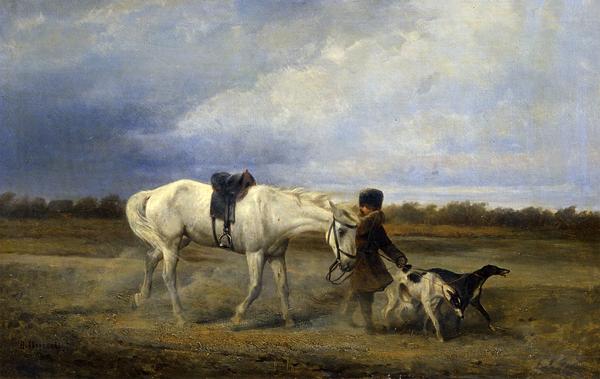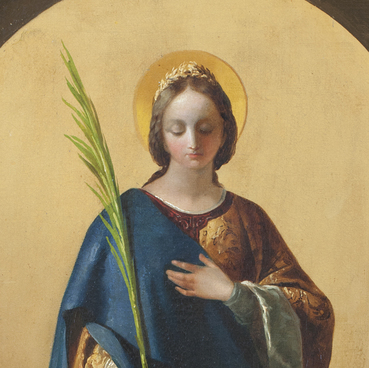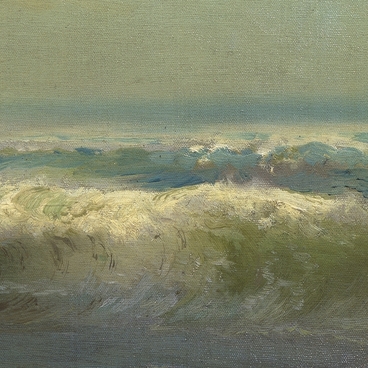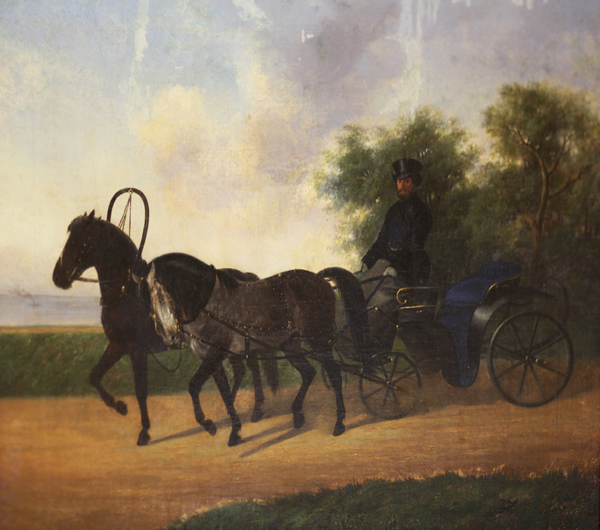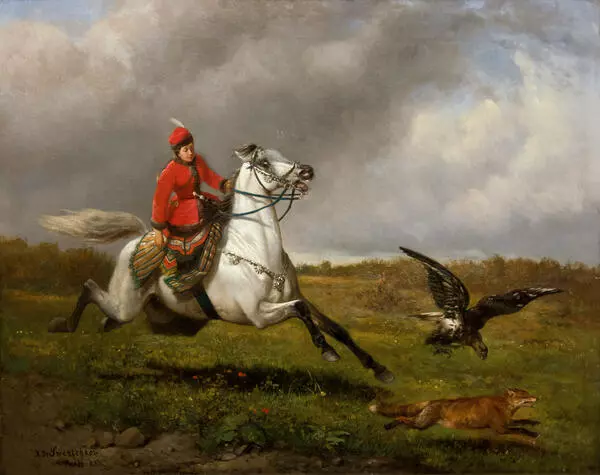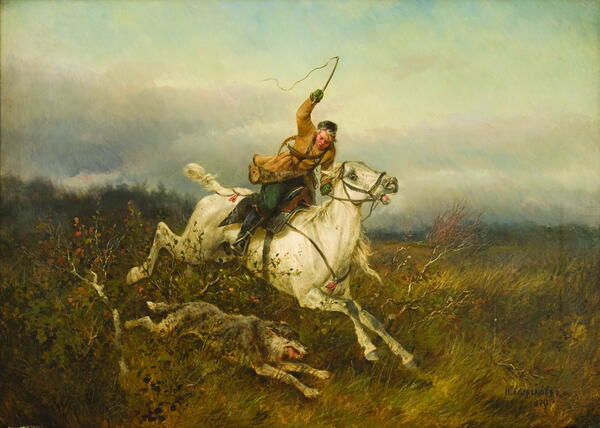In the latter half of the 19th century, the genre art was especially popular among other types of painting. It appeared in Russia much later than other genres. It was formed in the 1820s on the basis of Venetsianov’s painting techniques “a la nature”. Contemplative and uneventful among the artists of the Venetsianov school, the genre gained narration and critical principle in the 1840s (primarily in the works by P.A. Fedotov); a decade later, it became openly denunciatory.
Passion for the genre affected the artwork of Nikolai Yegorovich Sverchkov, one of the most famous animal painters of the latter half of the 19th century. Being the son of an employee of the Court Stable Department, the future artist has been observing and painting from nature a variety of animals ever since he was little. Having not received a systematic art education, he managed to independently develop his talent and to achieve amazing skill and ease in portraying animals, especially horses. Sverchkov’s works represented Russian art at world exhibitions in Paris, Philadelphia; the French government awarded him the Legion of Honour.
Public interest in folk life, the artist’s entourage, which included the famous poet and democrat Nekrasov, had a strong influence on the worldview of Sverchkov, who devoted himself to art, choosing for the rendering of “Russian life, hunting and traveling in Russia.” Interest in the life of peasants, love of Russian nature brought the poet and the artist together. The sociological and critical orientation of the genre works of those years was finally determined - a sympathetic display of the plight of the common people becomes their dominant motif.
Coming to genre painting, Sverchkov dwells on subjects, in the development of which his knowledge in the field of animalistic genre could find application. Hunting themes in the visual art, having reached the greatest popularity in those days, in Sverchkov’s works for the first time received an interpretation not as lordly amusement, but through the perception of it by the peasantry as craft and hard work.
The painting ‘The Huntsboy’ was most likely done by Sverchkov during this period. The theme of the joyless everyday life of a dog-boy is developed in a quiet and uncomplicated narrative, whose slow rhythm has a figurative meaning in itself. The artist not only seeks to render his perception of the nature of plain Russia: a dull, rainy landscape is not just a backdrop for action, but rather an active means of expressing sympathy for the fate of a destitute boy deprived of childhood. The impression of the cheerlessness of human existence is also supported by the colour structure of the painting: the monotonous brown colour of the earth and the dull grey of the sky. The Huntsboy is one of the best works by Sverchkov, which holds a special place in his creative heritage.

